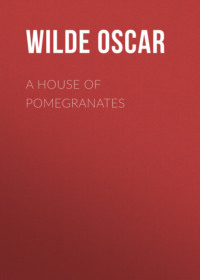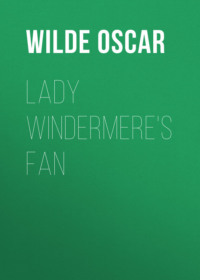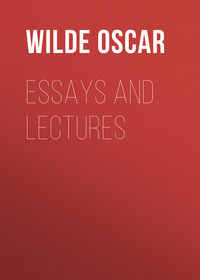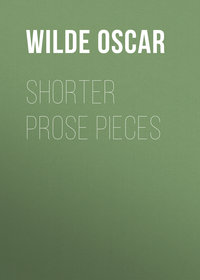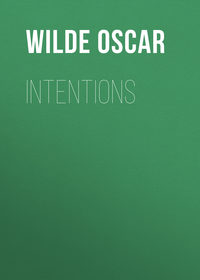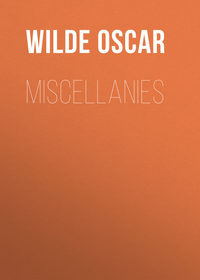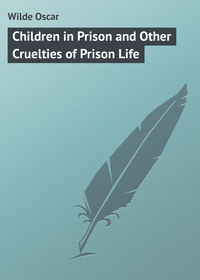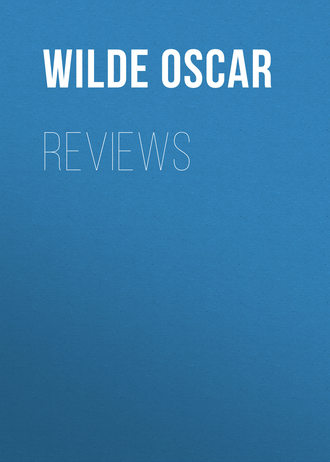 полная версия
полная версияReviews
Soon, also, was suggested the idea that, instead of laboriously withdrawing threads from stout linen, it would be more convenient to introduce a needle-made pattern into an open network ground, which was called a lacis. Of this kind of embroidery many specimens are extant. The Cluny Museum possesses a linen cap said to have belonged to Charles V.; and an alb of linen drawn-thread work, supposed to have been made by Anne of Bohemia (1527), is preserved in the cathedral at Prague. Catherine de Medicis had a bed draped with squares of réseuil, or lacis, and it is recorded that ‘the girls and servants of her household consumed much time in making squares of réseuil.’ The interesting pattern-books for open-ground embroidery, of which the first was published in 1527 by Pierre Quinty, of Cologne, supply us with the means of tracing the stages in the transition from white thread embroidery to needle-point lace. We meet in them with a style of needle-work which differs from embroidery in not being wrought upon a stuff foundation. It is, in fact, true lace, done, as it were, ‘in the air,’ both ground and pattern being entirely produced by the lace-maker.
The elaborate use of lace in costume was, of course, largely stimulated by the fashion of wearing ruffs, and their companion cuffs or sleeves. Catherine de Medicis induced one Frederic Vinciolo to come from Italy and make ruffs and gadrooned collars, the fashion of which she started in France; and Henry III. was so punctilious over his ruffs that he would iron and goffer his cuffs and collars himself rather than see their pleats limp and out of shape. The pattern-books also gave a great impulse to the art. M. Lefébure mentions German books with patterns of eagles, heraldic emblems, hunting scenes, and plants and leaves belonging to Northern vegetation; and Italian books, in which the motifs consist of oleander blossoms, and elegant wreaths and scrolls, landscapes with mythological scenes, and hunting episodes, less realistic than the Northern ones, in which appear fauns, and nymphs or amorini shooting arrows. With regard to these patterns, M. Lefébure notices a curious fact. The oldest painting in which lace is depicted is that of a lady, by Carpaccio, who died about 1523. The cuffs of the lady are edged with a narrow lace, the pattern of which reappears in Vecellio’s Corona, a book not published until 1591. This particular pattern was, therefore, in use at least eighty years before it got into circulation with other published patterns.
It was not, however, till the seventeenth century that lace acquired a really independent character and individuality, and M. Duplessis states that the production of the more noteworthy of early laces owes more to the influence of men than to that of women. The reign of Louis XIV. witnessed the production of the most stately needle-point laces, the transformation of Venetian point, and the growth of Points d’Alençon, d’Argentan, de Bruxelles and d’Angleterre.
The king, aided by Colbert, determined to make France the centre, if possible, for lace manufacture, sending for this purpose both to Venice and to Flanders for workers. The studio of the Gobelins supplied designs. The dandies had their huge rabatos or bands falling from beneath the chin over the breast, and great prelates, like Bossuet and Fénelon, wore their wonderful albs and rochets. It is related of a collar made at Venice for Louis XIV. that the lace-workers, being unable to find sufficiently fine horse-hair, employed some of their own hairs instead, in order to secure that marvellous delicacy of work which they aimed at producing.
In the eighteenth century, Venice, finding that laces of lighter texture were sought after, set herself to make rose-point; and at the Court of Louis XV. the choice of lace was regulated by still more elaborate etiquette. The Revolution, however, ruined many of the manufactures. Alençon survived, and Napoleon encouraged it, and endeavoured to renew the old rules about the necessity of wearing point-lace at Court receptions. A wonderful piece of lace, powdered over with devices of bees, and costing 40,000 francs, was ordered. It was begun for the Empress Josephine, but in the course of its making her escutcheons were replaced by those of Marie Louise.
M. Lefébure concludes his interesting history by stating very clearly his attitude towards machine-made lace. ‘It would be an obvious loss to art,’ he says, ‘should the making of lace by hand become extinct, for machinery, as skilfully devised as possible, cannot do what the hand does.’ It can give us ‘the results of processes, not the creations of artistic handicraft.’ Art is absent ‘where formal calculation pretends to supersede emotion’; it is absent ‘where no trace can be detected of intelligence guiding handicraft, whose hesitancies even possess peculiar charm.. cheapness is never commendable in respect of things which are not absolute necessities; it lowers artistic standard.’ These are admirable remarks, and with them we take leave of this fascinating book, with its delightful illustrations, its charming anecdotes, its excellent advice. Mr. Alan Cole deserves the thanks of all who are interested in art for bringing this book before the public in so attractive and so inexpensive a form.
Embroidery and Lace: Their Manufacture and History from the Remotest Antiquity to the Present Day. Translated and enlarged by Alan S. Cole from the French of Ernest Lefébure. (Grevel and Co.)
THE POETS’ CORNER – VIII
(Pall Mall Gazette, November 16, 1888.)
A few years ago some of our minor poets tried to set Science to music, to write sonnets on the survival of the fittest and odes to Natural Selection. Socialism, and the sympathy with those who are unfit, seem, if we may judge from Miss Nesbit’s remarkable volume, to be the new theme of song, the fresh subject-matter for poetry. The change has some advantages. Scientific laws are at once too abstract and too clearly defined, and even the visible arts have not yet been able to translate into any symbols of beauty the discoveries of modern science. At the Arts and Crafts Exhibition we find the cosmogony of Moses, not the cosmogony of Darwin. To Mr. Burne-Jones Man is still a fallen angel, not a greater ape. Poverty and misery, upon the other hand, are terribly concrete things. We find their incarnation everywhere and, as we are discussing a matter of art, we have no hesitation in saying that they are not devoid of picturesqueness. The etcher or the painter finds in them ‘a subject made to his hand,’ and the poet has admirable opportunities of drawing weird and dramatic contrasts between the purple of the rich and the rags of the poor. From Miss Nesbit’s book comes not merely the voice of sympathy but also the cry of revolution:
This is our vengeance day. Our masters made fat with our fastingShall fall before us like corn when the sickle for harvest is strong:Old wrongs shall give might to our arm, remembrance of wrongs shall make lastingThe graves we will dig for our tyrants we bore with too much and too long.The poem from which we take this stanza is remarkably vigorous, and the only consolation that we can offer to the timid and the Tories is that as long as so much strength is employed in blowing the trumpet, the sword, so far as Miss Nesbit is concerned, will probably remain sheathed. Personally, and looking at the matter from a purely artistic point of view, we prefer Miss Nesbit’s gentler moments. Her eye for Nature is peculiarly keen. She has always an exquisite sense of colour and sometimes a most delicate ear for music. Many of her poems, such as The Moat House, Absolution, and The Singing of the Magnificat are true works of art, and Vies Manquées is a little gem of song, with its dainty dancing measure, its delicate and wilful fancy and the sharp poignant note of passion that suddenly strikes across it, marring its light laughter and lending its beauty a terrible and tragic meaning.
From the sonnets we take this at random:
Not Spring – too lavish of her bud and leaf —But Autumn with sad eyes and brows austere,When fields are bare, and woods are brown and sere,And leaden skies weep their enchantless grief.Spring is so much too bright, since Spring is brief,And in our hearts is Autumn all the year,Least sad when the wide pastures are most drearAnd fields grieve most – robbed of the last gold sheaf.These too, the opening stanzas of The Last Envoy, are charming:
The Wind, that through the silent woodland blowsO’er rippling corn and dreaming pastures goesStraight to the garden where the heart of SpringFaints in the heart of Summer’s earliest rose.Dimpling the meadow’s grassy green and grey,By furze that yellows all the common way,Gathering the gladness of the common broom,And too persistent fragrance of the may —Gathering whatever is of sweet and dear,The wandering wind has passed away from here,Has passed to where within your garden waitsThe concentrated sweetness of the year.But Miss Nesbit is not to be judged by mere extracts. Her work is too rich and too full for that.
Mr. Foster is an American poet who has read Hawthorne, which is wise of him, and imitated Longfellow, which is not quite so commendable. His Rebecca the Witch is a story of old Salem, written in the metre of Hiawatha, with a few rhymes thrown in, and conceived in the spirit of the author of The Scarlet Letter. The combination is not very satisfactory, but the poem, as a piece of fiction, has many elements of interest. Mr. Foster seems to be quite popular in America. The Chicago Times finds his fancies ‘very playful and sunny,’ and the Indianapolis Journal speaks of his ‘tender and appreciative style.’ He is certainly a clever story-teller, and The Noah’s Ark (which ‘somehow had escaped the sheriff’s hand’) is bright and amusing, and its pathos, like the pathos of a melodrama, is a purely picturesque element not intended to be taken too seriously. We cannot, however, recommend the definitely comic poems. They are very depressing.
Mr. John Renton Denning dedicates his book to the Duke of Connaught, who is Colonel-in-Chief of the Rifle Brigade, in which regiment Mr. Denning was once himself a private soldier. His poems show an ardent love of Keats and a profligate luxuriance of adjectives:
And I will build a bower for thee, sweet,A verdurous shelter from the noonday heat,Thick rustling ivy, broad and green, and shining,With honeysuckle creeping up and twiningIts nectared sweetness round thee; violetsAnd daisies with their fringèd coronetsAnd the white bells of tiny valley lilies,And golden-leaved narcissi – daffodilliesShall grow around thy dwelling – luscious fareOf fruit on which the sun has laughed;this is the immature manner of Endymion with a vengeance and is not to be encouraged. Still, Mr. Denning is not always so anxious to reproduce the faults of his master. Sometimes he writes with wonderful grace and charm. Sylvia, for instance, is an exceedingly pretty poem, and The Exile has many powerful and picturesque lines. Mr. Denning should make a selection of his poems and publish them in better type and on better paper. The ‘get-up’ of his volume, to use the slang phrase of our young poets, is very bad indeed, and reflects no credit on the press of the Education Society of Bombay.
The best poem in Mr. Joseph McKim’s little book is, undoubtedly, William the Silent. It is written in the spirited Macaulay style:
Awake, awake, ye burghers brave! shout, shout for joy and sing!With thirty thousand at his back comes forth your hero King.Now shake for ever from your necks the servile yoke of Spain,And raise your arms and end for aye false Alva’s cruel reign.Ho! Maestricht, Liège, Brussels fair! pour forth your warriors brave,And join your hands with him who comes your hearths and homes to save.Some people like this style.Mrs. Horace Dobell, who has arrived at her seventeenth volume of poetry, seems very angry with everybody, and writes poems to A Human Toad with lurid and mysterious footnotes such as – ‘Yet some one, not a friend of – did! on a certain occasion of a glib utterance of calumnies, by – ! at Hampstead.’ Here indeed is a Soul’s Tragedy.
‘In many cases I have deliberately employed alliteration, believing that the music of a line is intensified thereby,’ says Mr. Kelly in the preface to his poems, and there is certainly no reason why Mr. Kelly should not employ this ‘artful aid.’ Alliteration is one of the many secrets of English poetry, and as long as it is kept a secret it is admirable. Mr. Kelly, it must be admitted, uses it with becoming modesty and reserve and never suffers it to trammel the white feet of his bright and buoyant muse. His volume is, in many ways, extremely interesting. Most minor poets are at their best in sonnets, but with him it is not so. His sonnets are too narrative, too diffuse, and too lyrical. They lack concentration, and concentration is the very essence of a sonnet. His longer poems, on the other hand, have many good qualities. We do not care for Psychossolles, which is elaborately commonplace, but The Flight of Calliope has many charming passages. It is a pity that Mr. Kelly has included the poems written before the age of nineteen. Youth is rarely original.
Andiatoroctè is the title of a volume of poems by the Rev. Clarence Walworth, of Albany, N.Y. It is a word borrowed from the Indians, and should, we think, be returned to them as soon as possible. The most curious poem of the book is called Scenes at the Holy Home:
Jesus and Joseph at work! Hurra!Sight never to see again,A prentice Deity plies the saw,While the Master ploughs with the plane.Poems of this kind were popular in the Middle Ages when the cathedrals of every Christian country served as its theatres. They are anachronisms now, and it is odd that they should come to us from the United States. In matters of this kind we should have some protection.
(1) Lays and Legends. By E. Nesbit. (Longmans, Green and Co.)
(2) Rebecca the Witch and Other Tales. By David Skaats Foster. (G. P. Putnam’s Sons.)
(3) Poems and Songs. By John Renton Denning. (Bombay: Education Society’s Press.)
(4) Poems. By Joseph McKim. (Kegan Paul.)
(5) In the Watches of the Night. Poems in eighteen volumes. By Mrs. Horace Dobell. Vol. xvii. (Remington and Co.)
(6) Poems. By James Kelly. (Glasgow: Reid and Coghill.)
(7) Andiatoroctè. By the Rev. Clarence A. Walworth. (G. P. Putnam’s Sons.)
A NOTE ON SOME MODERN POETS
(Woman’s World, December 1888.)
‘If I were king,’ says Mr. Henley, in one of his most modest rondeaus,
‘Art should aspire, yet ugliness be dear;Beauty, the shaft, should speed with wit for feather;And love, sweet love, should never fall to sere,If I were king.’And these lines contain, if not the best criticism of his own work, certainly a very complete statement of his aim and motive as a poet. His little Book of Verses reveals to us an artist who is seeking to find new methods of expression and has not merely a delicate sense of beauty and a brilliant, fantastic wit, but a real passion also for what is horrible, ugly, or grotesque. No doubt, everything that is worthy of existence is worthy also of art – at least, one would like to think so – but while echo or mirror can repeat for us a beautiful thing, to render artistically a thing that is ugly requires the most exquisite alchemy of form, the most subtle magic of transformation. To me there is more of the cry of Marsyas than of the singing of Apollo in the earlier poems of Mr. Henley’s volume, In Hospital: Rhymes and Rhythms, as he calls them. But it is impossible to deny their power. Some of them are like bright, vivid pastels; others like charcoal drawings, with dull blacks and murky whites; others like etchings with deeply-bitten lines, and abrupt contrasts, and clever colour-suggestions. In fact, they are like anything and everything, except perfected poems – that they certainly are not. They are still in the twilight. They are preludes, experiments, inspired jottings in a note-book, and should be heralded by a design of ‘Genius Making Sketches.’ Rhyme gives architecture as well as melody to verse; it gives that delightful sense of limitation which in all the arts is so pleasurable, and is, indeed, one of the secrets of perfection; it will whisper, as a French critic has said, ‘things unexpected and charming, things with strange and remote relations to each other,’ and bind them together in indissoluble bonds of beauty; and in his constant rejection of rhyme, Mr. Henley seems to me to have abdicated half his power. He is a roi en exil who has thrown away some of the strings of his lute; a poet who has forgotten the fairest part of his kingdom.
However, all work criticises itself. Here is one of Mr. Henley’s inspired jottings. According to the temperament of the reader, it will serve either as a model or as the reverse:
As with varnish red and glisteningDripped his hair; his feet were rigid;Raised, he settled stiffly sideways:You could see the hurts were spinal.He had fallen from an engine,And been dragged along the metals.It was hopeless, and they knew it;So they covered him, and left him.As he lay, by fits half sentient,Inarticulately moaning,With his stockinged feet protrudedSharp and awkward from the blankets,To his bed there came a woman,Stood and looked and sighed a little,And departed without speaking,As himself a few hours after.I was told she was his sweetheart.They were on the eve of marriage.She was quiet as a statue,But her lip was gray and writhen.In this poem, the rhythm and the music, such as it is, are obvious – perhaps a little too obvious. In the following I see nothing but ingeniously printed prose. It is a description – and a very accurate one – of a scene in a hospital ward. The medical students are supposed to be crowding round the doctor. What I quote is only a fragment, but the poem itself is a fragment:
So shows the ringSeen, from behind, round a conjurorDoing his pitch in the street.High shoulders, low shoulders, broad shoulders, narrow ones,Round, square, and angular, serry and shove;While from within a voice,Gravely and weightily fluent,Sounds; and then ceases; and suddenly(Look at the stress of the shoulders!)Out of a quiver of silence,Over the hiss of the spray,Comes a low cry, and the soundOf breath quick intaken through teethClenched in resolve. And the masterBreaks from the crowd, and goes,Wiping his hands,To the next bed, with his pupilsFlocking and whispering behind him.Now one can see.Case Number OneSits (rather pale) with his bedclothesStripped up, and showing his foot(Alas, for God’s image!)Swaddled in wet white lintBrilliantly hideous with red.Théophile Gautier once said that Flaubert’s style was meant to be read, and his own style to be looked at. Mr. Henley’s unrhymed rhythms form very dainty designs, from a typographical point of view. From the point of view of literature, they are a series of vivid, concentrated impressions, with a keen grip of fact, a terrible actuality, and an almost masterly power of picturesque presentation. But the poetic form – what of that?
Well, let us pass to the later poems, to the rondels and rondeaus, the sonnets and quatorzains, the echoes and the ballades. How brilliant and fanciful this is! The Toyokuni colour-print that suggested it could not be more delightful. It seems to have kept all the wilful fantastic charm of the original:
Was I a Samurai renowned,Two-sworded, fierce, immense of bow?A histrion angular and profound?A priest? a porter? – Child, althoughI have forgotten clean, I knowThat in the shade of Fujisan,What time the cherry-orchards blow,I loved you once in old Japan.As here you loiter, flowing-gownedAnd hugely sashed, with pins a-rowYour quaint head as with flamelets crowned,Demure, inviting – even so,When merry maids in MiyakoTo feel the sweet o’ the year began,And green gardens to overflow,I loved you once in old Japan.Clear shine the hills; the rice-fields roundTwo cranes are circling; sleepy and slow,A blue canal the lake’s blue boundBreaks at the bamboo bridge; and lo!Touched with the sundown’s spirit and glow,I see you turn, with flirted fan,Against the plum-tree’s bloomy snow.I loved you once in old Japan!ENVOYDear, ’twas a dozen lives ago;But that I was a lucky manThe Toyokuni here will show:I loved you – once – in old Japan!This rondel, too – how light it is, and graceful! —
We’ll to the woods and gather mayFresh from the footprints of the rain.We’ll to the woods, at every veinTo drink the spirit of the day.The winds of spring are out at play,The needs of spring in heart and brain.We’ll to the woods and gather mayFresh from the footprints of the rain.The world’s too near her end, you say?Hark to the blackbird’s mad refrain!It waits for her, the vast Inane?Then, girls, to help her on the wayWe’ll to the woods and gather may.There are fine verses, also, scattered through this little book; some of them very strong, as —
Out of the night that covers me,Black as the pit from pole to pole,I thank whatever gods may beFor my unconquerable soul.It matters not how strait the gate,How charged with punishments the scroll,I am the master of my fate:I am the captain of my soul.Others with a true touch of romance, as —
Or ever the knightly years were goneWith the old world to the grave,I was a king in Babylon,And you were a Christian slave.And here and there we come across such felicitous phrases as —
In the sand
The gold prow-griffin claws a hold,
or —
The spires
Shine and are changed,
and many other graceful or fanciful lines, even ‘the green sky’s minor thirds’ being perfectly right in its place, and a very refreshing bit of affectation in a volume where there is so much that is natural.
However, Mr. Henley is not to be judged by samples. Indeed, the most attractive thing in the book is no single poem that is in it, but the strong humane personality that stands behind both flawless and faulty work alike, and looks out through many masks, some of them beautiful, and some grotesque, and not a few misshapen. In the case with most of our modern poets, when we have analysed them down to an adjective, we can go no further, or we care to go no further; but with this book it is different. Through these reeds and pipes blows the very breath of life. It seems as if one could put one’s hand upon the singer’s heart and count its pulsations. There is something wholesome, virile and sane about the man’s soul. Anybody can be reasonable, but to be sane is not common; and sane poets are as rare as blue lilies, though they may not be quite so delightful.
Let the great winds their worst and wildest blow,Or the gold weather round us mellow slow;We have fulfilled ourselves, and we can dare,And we can conquer, though we may not shareIn the rich quiet of the afterglow,What is to come,is the concluding stanza of the last rondeau – indeed, of the last poem in the collection, and the high, serene temper displayed in these lines serves at once as keynote and keystone to the book. The very lightness and slightness of so much of the work, its careless moods and casual fancies, seem to suggest a nature that is not primarily interested in art – a nature, like Sordello’s, passionately enamoured of life, one to which lyre and lute are things of less importance. From this mere joy of living, this frank delight in experience for its own sake, this lofty indifference, and momentary unregretted ardours, come all the faults and all the beauties of the volume. But there is this difference between them – the faults are deliberate, and the result of much study; the beauties have the air of fascinating impromptus. Mr. Henley’s healthy, if sometimes misapplied, confidence in the myriad suggestions of life gives him his charm. He is made to sing along the highways, not to sit down and write. If he took himself more seriously, his work would become trivial.
* * * * *Mr. William Sharp takes himself very seriously and has written a preface to his Romantic Ballads and Poems of Phantasy, which is, on the whole, the most interesting part of his volume. We are all, it seems, far too cultured, and lack robustness. ‘There are those amongst us,’ says Mr. Sharp, ‘who would prefer a dexterously-turned triolet to such apparently uncouth measures as Thomas the Rhymer, or the ballad of Clerk Saunders: who would rather listen to the drawing-room music of the Villanelle than to the wild harp-playing by the mill-dams o’ Binnorie, or the sough of the night-wind o’er drumly Annan water.’ Such an expression as ‘the drawing-room music of the Villanelle’ is not very happy, and I cannot imagine any one with the smallest pretensions to culture preferring a dexterously turned triolet to a fine imaginative ballad, as it is only the Philistine who ever dreams of comparing works of art that are absolutely different in motive, in treatment, and in form. If English Poetry is in danger – and, according to Mr. Sharp, the poor nymph is in a very critical state – what she has to fear is not the fascination of dainty metre or delicate form, but the predominance of the intellectual spirit over the spirit of beauty. Lord Tennyson dethroned Wordsworth as a literary influence, and later on Mr. Swinburne filled all the mountain valleys with echoes of his own song. The influence to-day is that of Mr. Browning. And as for the triolets, and the rondels, and the careful study of metrical subtleties, these things are merely the signs of a desire for perfection in small things and of the recognition of poetry as an art. They have had certainly one good result – they have made our minor poets readable, and have not left us entirely at the mercy of geniuses.


